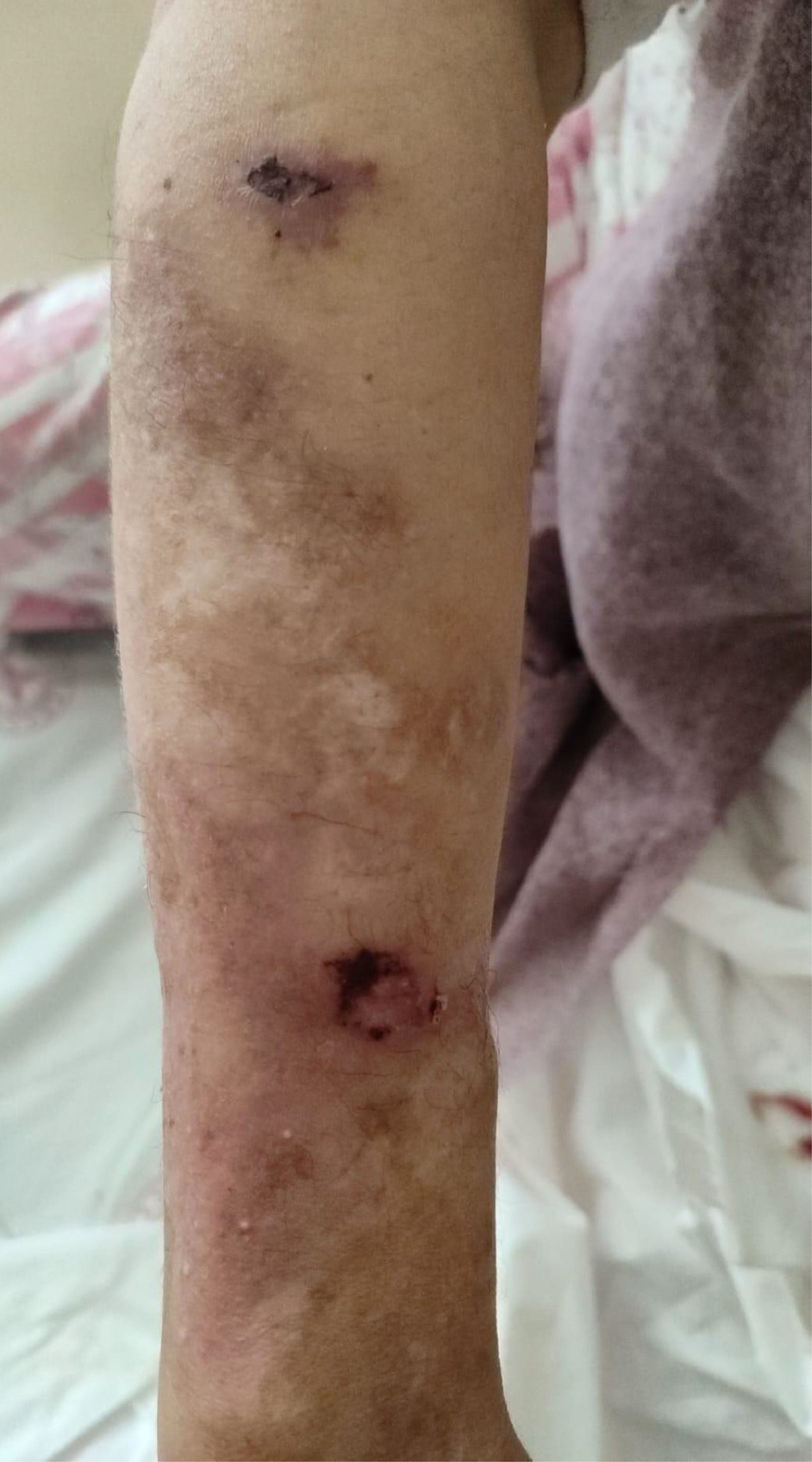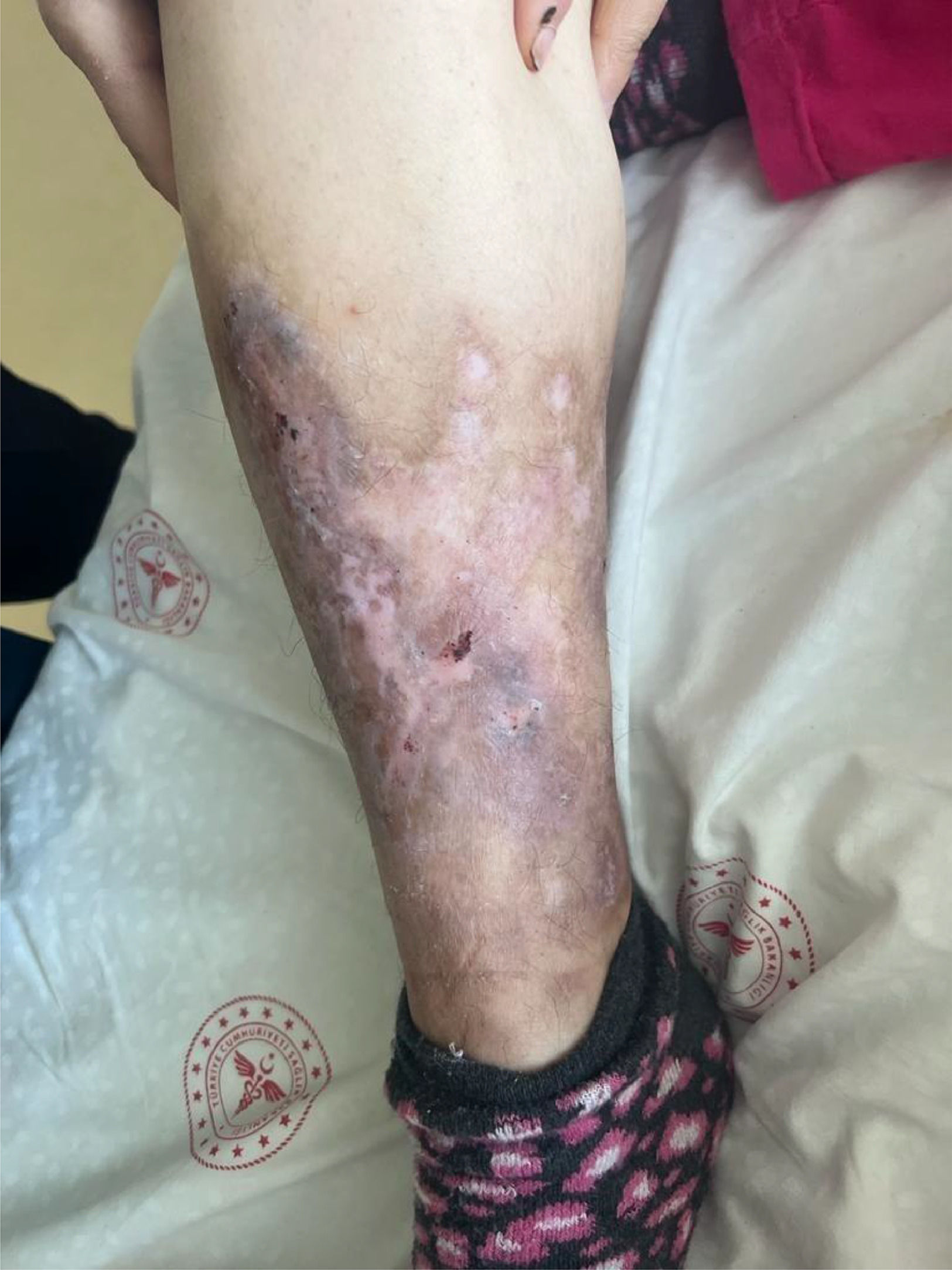
X Eurasian Hematology Oncology Congress
More infoDermatitis artifacta is a condition in which skin lesions are produced solely by the patient's own actions. This often occurs as a result or manifestation of a psychological problem (1,2). In immune thrombotic purpura (ITP), a condition characterized by a low level of platelets, petechial rashes usually occur. Patients usually seek help for these skin manifestations (3).
Case reportA 40-year-old female patient was being followed up in the hematology clinic due to ITP. White blood count was 5.59 × 10^3/µL, hemoglobin value was 10.3 g/dL, platelet count was 21 × 10^3/µL. Peripheral smear: He was hospitalized with complaints of a low platelet count and bleeding from lesions on his arms and legs. The patient had irregularly shaped lesions and bleeding areas on both forearms and legs.
Methodology: The patient was hospitalized due to hematological ITP, but these skin lesions were not compatible with ITP. A psychiatrist was consulted as the patient attempted to draw attention to her lesions during daily visits. She was diagnosed with factitial dermatitis by psychiatry.
ResultsLater, upon the development of symptoms such as epistaxis and hemoptysis associated with ITP, the patient's attention was directed to the newly developing symptoms, and the effort to create lesions decreased and the existing lesions were observed to regress.
ConclusionAn autoantibody-mediated thrombocytopenic condition called immune thrombocytopenic purpura (ITP) causes an accelerated loss of platelets and presents with petechial rashes (4). On the other hand, dermatitis artifacta is a psychological problem that is characterized by self-induced skin lesions and should be examined accordingly (5). Clinicians should always be aware that skin lesions in ITP patients may be oriented toward psychological disorders.








